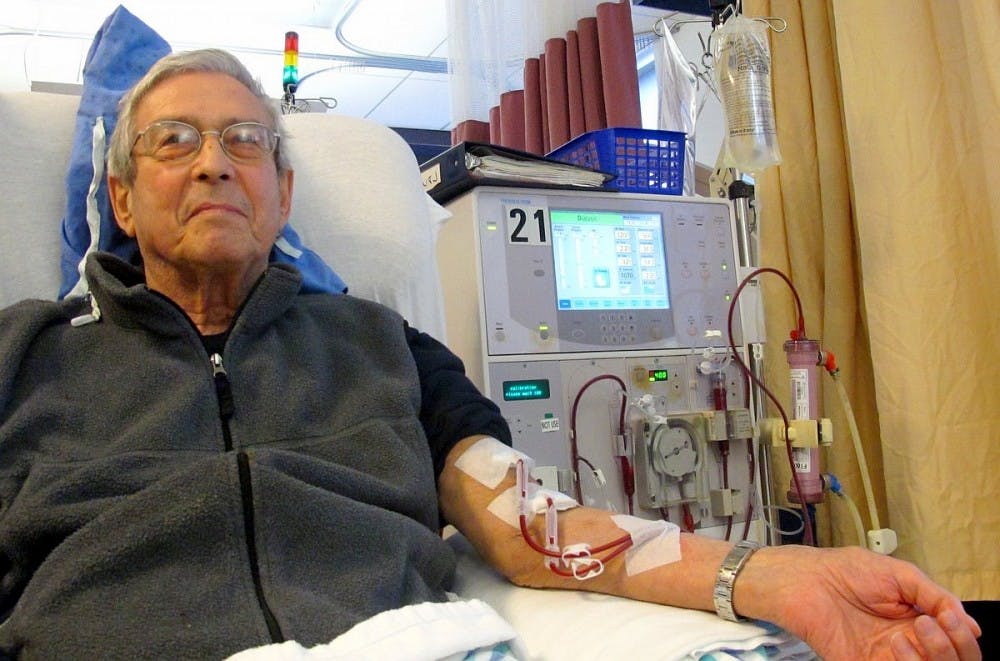According to a recent study from Washington University School of Medicine in St. Louis and the German Center for Neurodegenerative Diseases in Germany, a blood test might be able to reliably detect signs of brain damage in a person who is on the way to developing Alzheimer’s disease. This simple blood test can provide results even before the person begins showing hallmark symptoms of the disease, such as confusion and memory loss.
The study’s findings, published on Jan. 21 in Nature Medicine, are hoped to help create an inexpensive form of early diagnosis for not only Alzheimer’s but also other neurodegenerative diseases such as multiple sclerosis, traumatic brain injury and stroke.
Brian Gordon, an assistant professor of Radiology at Washington University’s Mallinckrodt Institute of Radiology and an author of the study, explained the promising clinical applications of this blood test.
“This is something that would be easy to incorporate into a screening test in a neurology clinic,” Gordon said in a press release.
“We validated it in people with Alzheimer’s disease because we know their brains undergo lots of neurodegeneration, but this marker isn’t specific for Alzheimer’s. High levels could be a sign of many different neurological diseases and injuries.”
The new blood test is able to detect neurofilament light chain, which is a structural protein that forms part of the interior skeleton of neurons. The protein leaks out into the cerebrospinal fluid that covers the brain and the spinal cord and then enters the bloodstream in cases where neurons are damaged or dying.
Finding high levels of neurofilament light chain in a person’s cerebrospinal fluid has been shown to reliably indicate whether a person’s brain cells have been damaged. However, in order to obtain the cerebrospinal fluid sample, a spinal tap must be used. This method is not as convenient as a blood test and thus causes many people to be reluctant to undergo the procedure.
Mathias Jucker, a professor of cellular neurology at the German Center for Neurodegenerative Diseases in Tübingen and a senior author of the study, along with Gordon and colleagues from all over the world, studied whether levels of the protein in blood also reflect neurological damage.
The researchers turned to a group of families with rare genetic variants that cause Alzheimer’s disease at a young age, typically in a person’s 50s, 40s or even 30s. These families form the study population of the Dominantly Inherited Alzheimer Network (DIAN), an international consortium led by Washington University that is investigating the roots of Alzheimer’s disease.
In the family, parents with the mutation have a 50 percent chance of passing the mutation on to their children. If the mutation is inherited, the child is almost sure to develop symptoms of the disease around the same age as their parent. This time frame allows researchers to study what happens in the brain in the years prior to the development of symptoms for the disease.
According to EurekAlert!, the researchers studied more than 400 people participating in the DIAN study, 247 who carry an early-onset genetic variant and 162 of their unaffected relatives. Each participant had previously visited a DIAN clinic to give blood, undergo brain scans and complete cognitive tests. Roughly half had been evaluated more than once, with each evaluation ranging typically about two to three years apart.
As the study showed, those with the faulty gene variant were found to have higher protein levels at baseline. Furthermore, these levels were found to rise over time. Not surprisingly, people with the healthy gene variant were found to have lower and more steady protein levels. This difference was detected as early as 16 years before cognitive symptoms began to arise.
In addition to this, researchers noted that the speed with which the protein levels rose matched the seed with which the precuneus, a part of the brain involved in memory, thinned and shrank.
Stephanie Schultz, one of the paper’s co-authors and a graduate student at Washington University, shared her hopes for the new blood test.
“Sixteen years before symptoms arise is really quite early in the disease process, but we were able to see differences even then. This could be a good preclinical biomarker to identify those who will go on to develop clinical symptoms,” Schultz said, according to EurekAlert!.
In order to determine whether the protein levels were indicative of future cognitive decline, the researchers collected data on 39 people with disease-causing variants. All of these subjects returned to the clinic an average of two years after their last visit.
The participants underwent brain scans and two cognitive tests: the Mini-Mental State Examination and the Logical Memory subtest. Through these tests, the researchers concluded that people whose protein levels rose more rapidly were more likely to show signs of brain atrophy and diminished cognitive abilities upon revisiting the clinic.
“It will be important to confirm our findings in late-onset Alzheimer’s disease and to define the time period over which neurofilament changes have to be assessed for optimal clinical predictability,” Jucker, who leads the DIAN study in Germany, said, according to EurekAlert!.
An existing commercial kit, very similar to the one used by the authors, is already available to test for protein levels in the blood, but the Food and Drug Administration (FDA) has not approved it as a diagnostic method or to predict risk for developing neurological diseases.
“I could see this being used in the clinic in a few years to identify signs of brain damage in individual patients,” Gordon said.
“We’re not at the point we can tell people, ‘In five years you’ll have dementia.’ We are all working towards that.”





